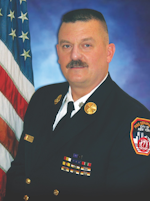For decades, almost 3,000 American citizens die in fires in the United States every year. Statistics indicate that most of those deaths occurred in private dwellings or house fires. That leads me to the question, “When should the primary search start and end?”
Is there a standard for the beginning and conclusion of the primary search? (There are standards for everything else!) What is acceptable? What time frame can you defend? How long must the citizens in your community wait inside of their burning home for a firefighter to get in there, find them and get them out?
If you are uncomfortable with this discussion, you should be.
Primary search
It’s 3 a.m., and you are a battalion chief who is responding to a reported house fire with people possibly inside. You arrive at the address and observe fire issuing from a single front window on the first floor of a one-and-a-half-story private dwelling in a neighborhood that has hydrants. Smoke is pushing from many of the other windows on the first and second floor. The front porch light is on, and an American flag is visible at the end of the porch.
Your first engine arrives one minute after you, immediately pulls a 1¾-inch attack hoseline and moves toward the front door. Your 360 discloses smoke from all of the rear windows and a back door. Within a minute or so, the first engine is ready for entry.
Question: Do you order that crew to immediately enter and begin the fire attack?
Answer: You better! There are reports of people trapped and you have an engine on scene with hose and water available.
A moment later, a second engine arrives and lays in the supply line. As the supply line connections are completed, the engine officer reports in to incident command and states that the supply line is complete.
Question: Should you order this crew (either two or three members) to enter and begin the primary search?
Answer: You better! There is a family that’s inside of that house that’s waiting to be rescued. Those people have been in there for a long time—even before you and your crew were dispatched.
Question: So, now you have an engine crew that has an attack line on hydrant water that’s moving in to attack the fire on the first floor of the house. You also have a second crew that’s entering the building to begin the vital primary search for life. This brings up another question: Should the primary search crew at a house fire that includes reports of people inside at 3 a.m. conduct the search with a hoseline or without a hoseline?
Answer: Without a hoseline.
We know that a search can be conducted with a hoseline, but dragging the hoseline around while searching really slows down the search, which greatly increases the time that the victims will be waiting for your arrival and their survival.
Reducing civilian deaths
I have been talking about time here, and it’s the most important element in a primary search, but let’s be clear about what period of time is being discussed.
Some fire departments have small response areas, or they have units that are in close proximity to each other. In those situations, the response time is shorter—sometimes much shorter—than it is for departments that have larger response areas. However, I’m not talking here about response times. I’m talking about primary search completion times. The clock starts when the first company arrives and stops when the search is completed or a victim is located. Yes, the response time certainly might extend the time that victims are waiting, but the primary search completion time is an issue that you can have an effect on.
Obviously, I haven’t talked about search tactics, radio communications, or primary or secondary search procedures. The major point here is time, and if your firefighters are trained properly and equipped to conduct interior searches at house fires, and if your chiefs are trained and are prepared to order their units to conduct these searches, then your fire department will be contributing to the reduction of civilian fire deaths in the years to come.







